The same flashgun won’t suit everybody. Some of us want something small, lightweight and simple to use, others might want a high-end model that’s really power-packed and full of advanced features. It’s equally true that some flashguns are vastly more expensive than others and, if you’ve got an entry-level DSLR, it doesn’t make sense to spend more on your flashgun than your camera.
Whatever level of sophistication and price point you decide on, a flashgun is an amazingly versatile accessory. It’s supremely portable and can make a huge difference to the quality of lighting in almost any scenario, from night-time shots and gloomy interiors, to portraits on a bright sunny day.
With TTL (Through The Lens) flash metering, dedicated flashguns can team up with your camera to enable automatic exposures in all sorts of shooting conditions. It’s generally easy to apply flash exposure bias if necessary, to fine-tune the power setting, or to use fully manual flash power if you prefer to be in control.
Mid-range and high-end flashguns tend to have motorized zoom heads. These can automatically track the focal length or zoom setting of the lens you’re using, narrowing the beam of light for telephoto shots to make more flash power available. For extra wide-angle coverage, a flip-down reflector is usually included in the head of the flashgun.
Most flashguns also have bounce and swivel heads. These enable you to bounce the light output off walls and ceilings, instead of firing it directly at the subject
Most flashguns also have bounce and swivel heads. These enable you to bounce the light output off walls and ceilings, instead of firing it directly at the subject. This can give a much softer quality of light that’s vastly more flattering for portraits. The softness of the light increases with the size of the light source so, if you bounce the light from a small flashgun off a large surface like a white wall or ceiling, it effectively becomes much bigger. The trade-off is that the intensity of the light reaching the target is reduced, so a flashgun with a larger maximum power rating or ‘Guide number’ become preferable.
Another option is to use the flashgun off-camera. This enables the creation of ‘modelling’ with shadows, which gives images a much more three-dimensional look, rather than typical ‘flashgun’ lighting which can appear very flat. Many modern flashguns feature wireless master/slave connectivity for off-camera flash. This enables you to trigger the flashgun via an infrared link from a compatible DSLR, or in some cases from an RF (Radio Frequency) wireless trigger, as well as using multiple wirelessly connected flashguns to create more exotic lighting effects. Let’s take a closer look at the top 10 flashguns for both Canon and Nikon DSLRs.
- Learn more: Flash photography made easy
Best Speedlites for Canon DSLRs
Canon makes a range of Speedlite flashguns to suit a range of price points and requirements, ranging from small and simple models to fully pro-grade options. We’ll look at all of those first, in price-ascending order, and then move on to the most appealing Canon-dedicated flashguns from independent manufacturers, including Hahnel, Metz, Nissin and Phottix.
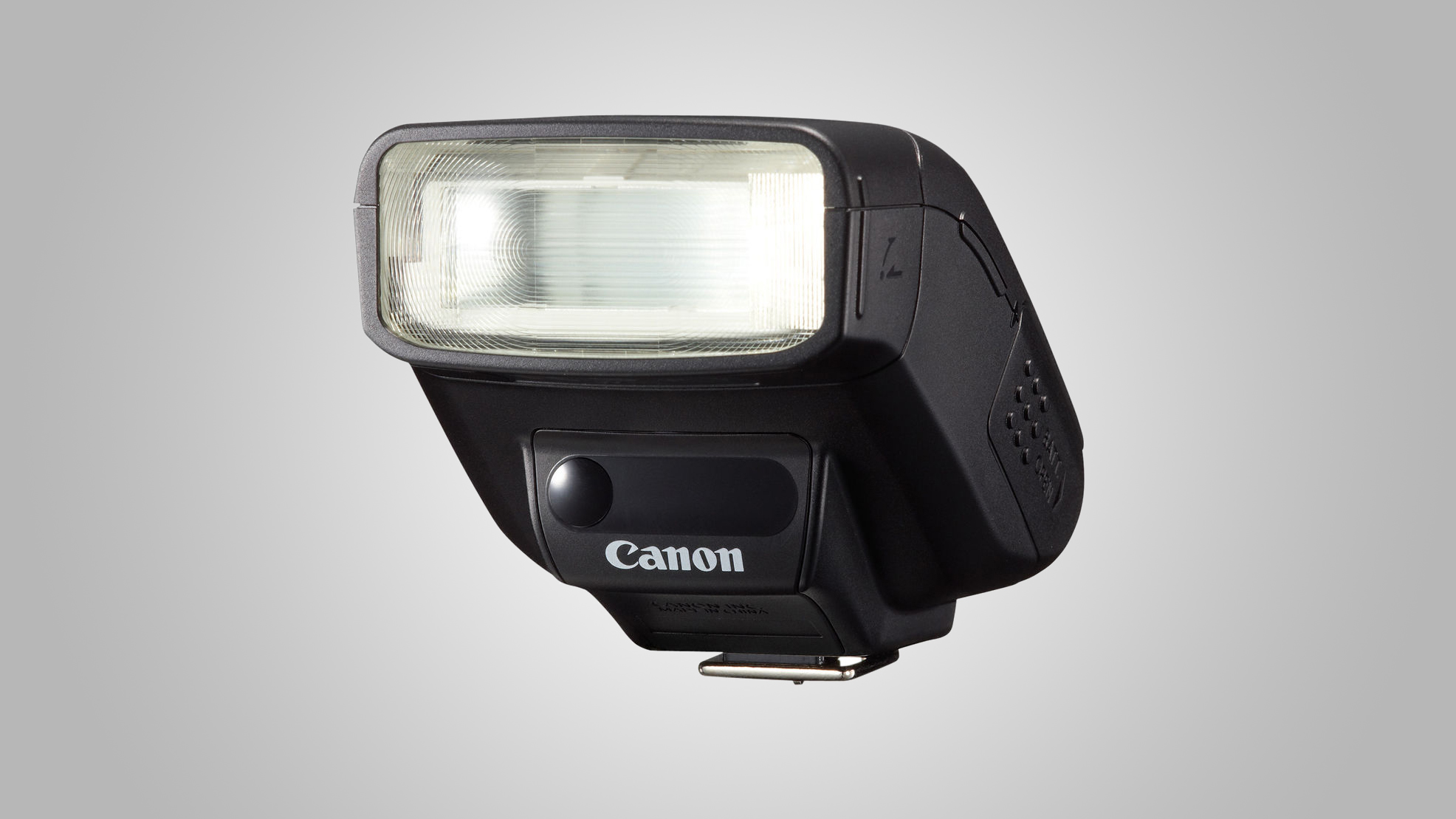
Small enough to slip into a spare pocket, this is a seriously downsized flashgun, running on two AA batteries instead of the usual four. It also lacks an LCD screen and onboard controls, so you need to make all adjustments from the host camera’s flash control menu. Even so, it’s compatible with high-speed sync and rear-curtain modes, and enables TTL flash exposure compensation and the use of manual power settings. There’s a manual push-pull mechanism for selecting either 28mm or 50mm zoom settings but no swivel facility, so you can’t bounce the flash off the ceiling if you’re shooting in portrait (upright) orientation, at least when the flashgun is mounted in the camera’s hotshoe. On the plus side, wireless slave mode is featured for off-camera flash. Performance is good overall and, in our tests, maximum output power isn’t much less than from the bigger Canon 430EX III-RT at corresponding zoom settings. One drawback, however, is that recycling after a full-power flash takes more than twice as long, at just over five seconds.
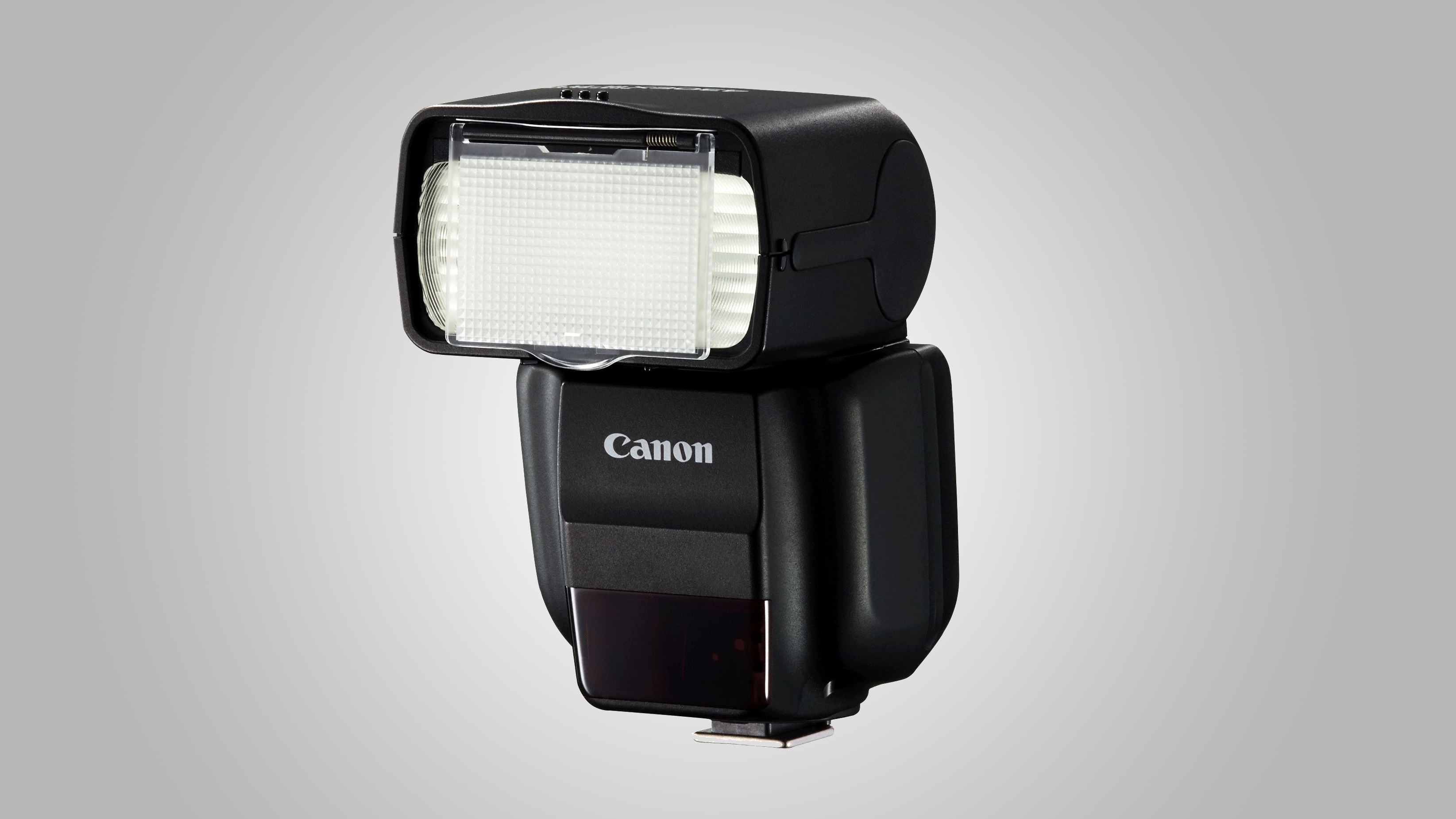
A sizeable step up from the Canon 270EX II, this flashgun has a full set of onboard controls and an LCD screen, enabling intuitive and versatile operation without resorting to in-camera menus. It also adds a motorized zoom head with a 24-105mm range, and complements the 0-90 degree bounce facility with 150/180 degrees of swivel to the left and right respectively. Useful supplied accessories include a carrying pouch and stand, diffusion dome and colour-matching filter for balancing flash output with tungsten lighting. Flash modes include high-speed sync and rear-curtain options, but there’s no programmable repeat mode. The biggest update over the Mk II is the addition of RF (Radio Frequency) communication, while the previous infrared slave mode is also retained. However, if you want to use the new flashgun as a wireless master, you can only do so in RF mode, which rules out pairing it with most Canon flashguns, as they only support optical transmission. There’s a little more power on tap than from the 270EX II and recycling after a full-power flash is more than twice as fast, at 2.2 seconds when using NiMH batteries.

In fully automatic ‘AI Bounce’ mode the 470EX-AI utilizes artificial intelligence to move its motorized head through 120 degrees of vertical rotation and a full 180 degrees to the left or right. It’s compatible with cameras launched in or after the second half of 2014, and works by firing a pre-flash pulse directly at the subject, then tilting vertically upwards and firing a second pre-flash pulse at the ceiling. The flashgun then calculates the optimum bounce angle and moves the head correspondingly. There’s also a semi-automatic AI Bounce mode, in which you can manually point the flash head in your desired direction. In other respects, the 470EX-AI is quite conventional. It lacks the RF (Radio Frequency) communication of the 430EX III-RT and both editions of the 600EX-RT. For wireless off-camera flash, it can therefore only operate via an optical link, and only as a slave, not a master. It also lacks a programmable repeat flash mode and a pull-out reflector card. Maximum output is slightly higher than that of the Canon 430EX III-RT and recycling is similarly swift, but batteries only last about two-thirds as long.
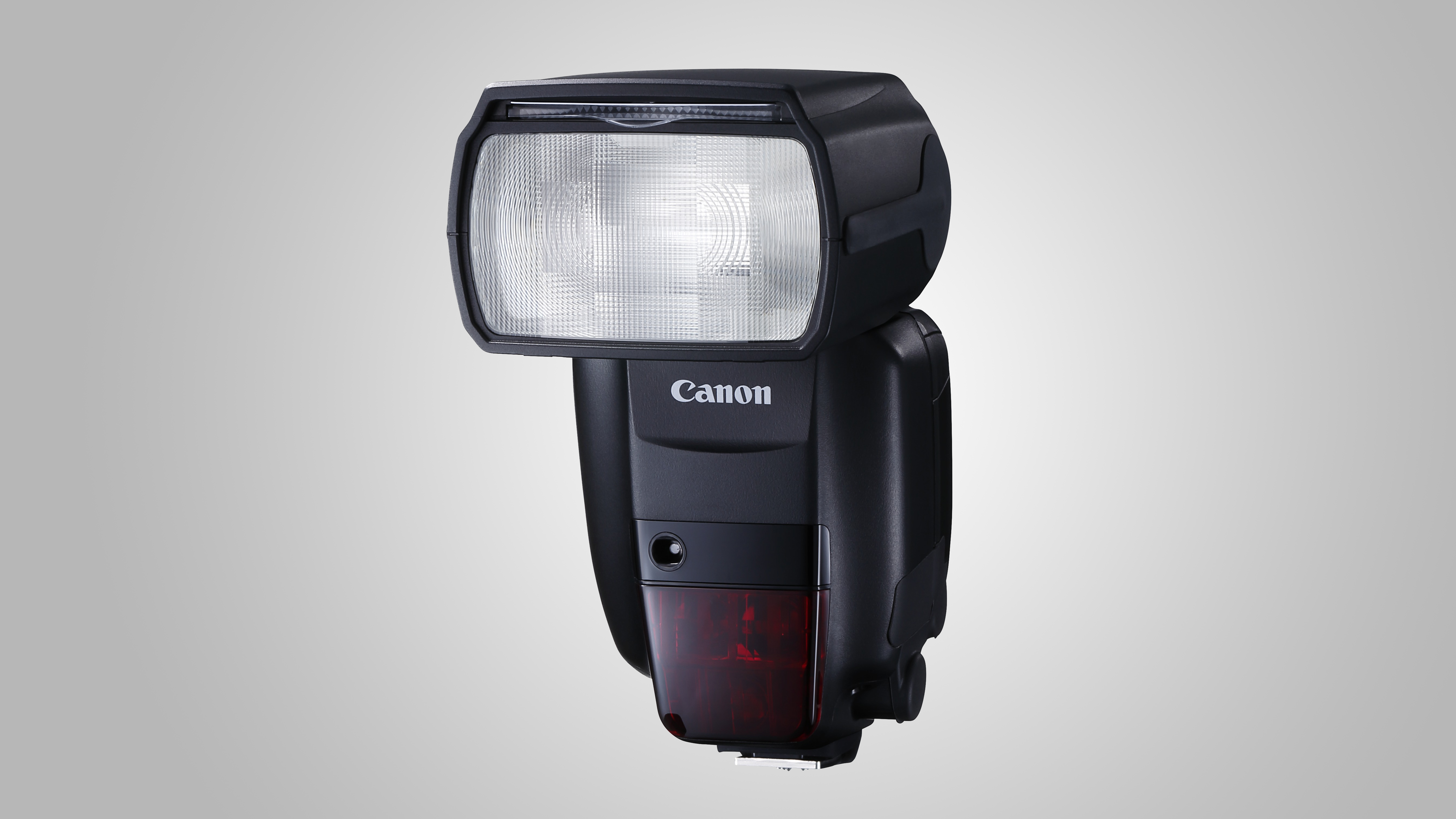
Built to satisfy the demands of busy professional photographers, the 600EX II-RT has a robust, weather-sealed construction. Upgrades over the 430EX III-RT include a power rating of Gn 60, a bounce range that dips to -7 degrees as well as covering the more usual 0-90 degree range, extended swivel to 180 degrees in both left and right directions, and a bigger zoom range of 20-200mm. A crucial addition is that the 600EX II-RT can work in master as well as slave wireless modes, with both infrared and RF options. RF linking increases the range from around 10m to 30m, with the extra benefit of being able to work around corners or through obstacles, as well as being more reliable than infrared in bright, outdoor conditions. The Mk II is cooler-running than the original edition, boosting continuous shooting stamina by as much as 50 per cent. As with most pro-grade flashguns, you can also connect an external power pack to keep the flashgun going for longer. A programmable repeat mode enables stroboscopic output, unavailable Canon’s lower-grade flashguns.

This Hahnel flashgun is available on its own or as part of two optional kits. The ‘Wireless Kit’ adds a hotshoe-mounting Viper RF trigger, and the ‘Wireless Pro Kit’ comprises two flashguns plus the RF trigger. The flashgun itself has a built-in RF transceiver enabling it to work in wireless RF mode as both a master and slave, over an impressive range of up to 100m. The addition of the Viper hotshoe-mounted trigger, with its on-board controls and LCD display, enables you to use one or more flashguns off-camera in RF wireless mode. A big difference compared with most flashguns is that the Hahnel is powered by a rechargeable Li-ion battery pack, instead of the usual four AA batteries. This enables a whopping 550 full-power flashes between recharging, and very rapid recycling speeds of just 0.7 and 1.5 seconds after a half-power or full-power flash respectively. Useful features include a 20-200mm motorized zoom head, a flip-down 14mm wide-angle diffuser and a pull-out catchlight/reflector card. There’s a full set of advanced flash modes, including high-speed sync, rear curtain and programmable repeat (multi-flash during a single exposure).

At first glance, this Metz flashgun looks a bit basic without any onboard controls. The reason for this is the inclusion of an intuitive touchscreen interface, which reduces button clutter around the back. The motorized zoom head has a 24-105mm range, with the usual reflector card and wide-angle diffuser built in, although swivel movement in the right-hand direction is limited to 120 degrees. For off-camera and multi-flashgun setups, the Metz includes both master and slave wireless modes. Typical of flashguns at this price point, there’s no programmable repeat flash mode. During our tests, maximum output was noticeably down on the specified Gn 52 rating, more similar to that of the Canon 430EX III-RT. Recycling speeds are a little pedestrian too, taking just over four seconds after a full-power flash when using NiMH batteries. Overall, however, it’s an attractive flashgun at the price.
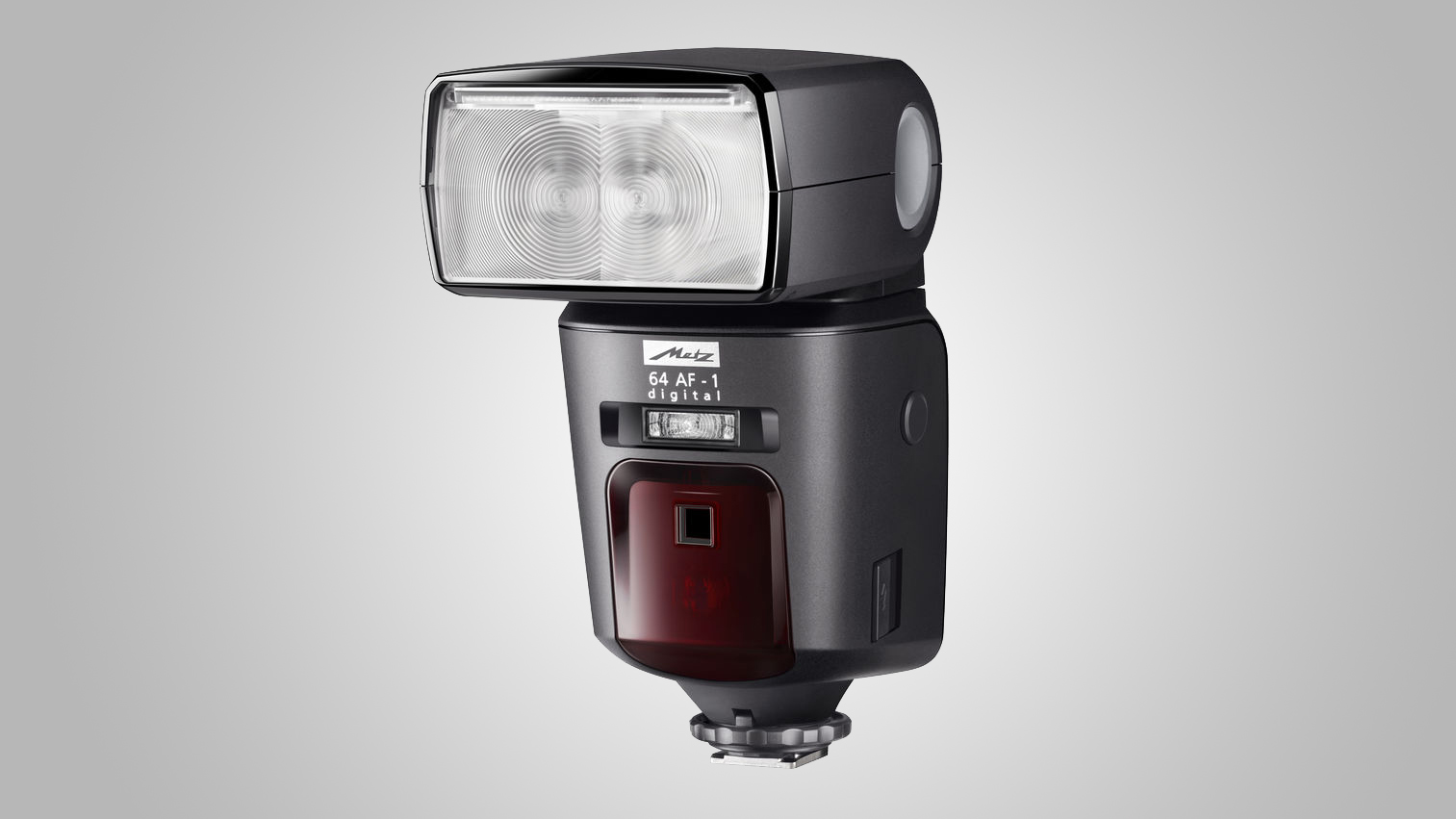
This is Metz’s most sophisticated dedicated flashgun, with a host of up-market features and a powerful Gn 64 output rating. Highlights include a 24-200mm zoom range, a -9 to 90-degree bounce facility, and the availability of both master and slave wireless operation. There’s also an unusual secondary sub-flash module, which is great for adding fill-in lighting when you’re using the main head in bounce or swivel mode. Like the Metz 52 AF-1, intuitive on-board control is based on a touchscreen but, this time, it’s a colour rather than mono screen. Pro-grade enhancements include a programmable repeat flash mode and a socket for an optional external power pack. When using NiMH batteries, recycling speed is pretty quick after a full-power flash, at 3.4 seconds, but recycling takes more than twice as long with alkaline cells.
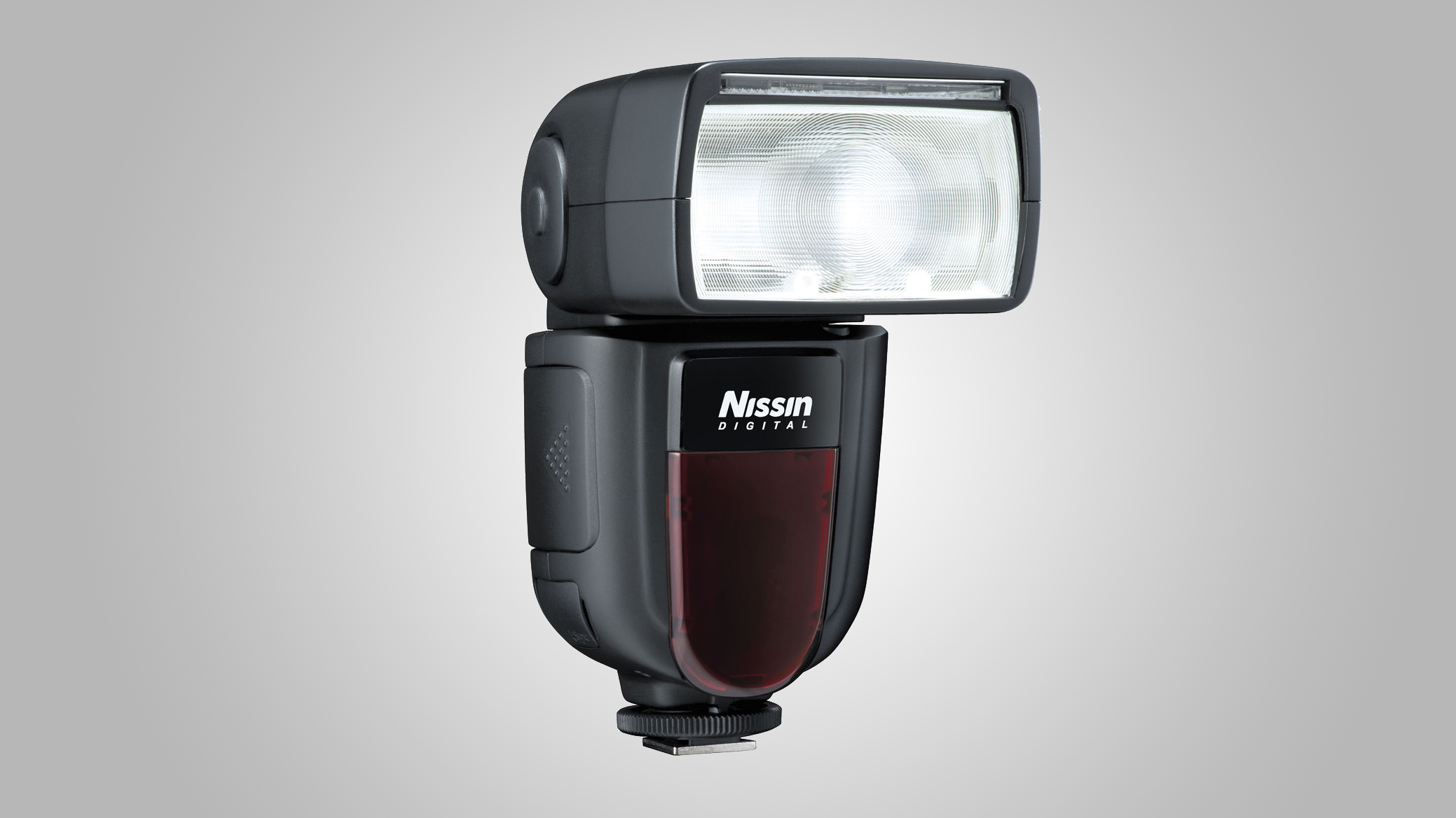
On the face of it, this Nissin flashgun looks pretty basic, with on-board controls that boil down to a single Set button and control wheel. Rudimentary adjustments can be carried out, like TTL flash exposure compensation but, for almost everything else, you’ll need to resort to the host camera’s menu system. A big attraction of this kit is that it comes complete with Nissin’s sophisticated ‘Air 1 Commander’ RF transmitter that slots into your camera’s hotshoe. The flashgun itself works in both infrared and RF slave modes. Additional, optical slave modes include ‘digital’ and ‘film’ options, both with manual power settings. The digital option disregards pre-flash pulses when triggering, whereas the film mode triggers on the first pulse of light, more useful when slaving from studio flash heads. High-speed sync and rear curtain sync are available, but there’s no repeating flash mode for sequential bursts within a single exposure. There’s plenty of power on tap, with a generous Gn 60 rating and a lengthy zoom of up to 200mm. Recycling speeds are super-fast, at around two or three seconds when using NiMH or alkaline batteries respectively.

Despite having a relatively small and lightweight build, this Nissin packs a real punch with a Gn 60 power rating. There’s a particularly smart colour display around the back, with an intuitive pictorial interface. Further attractions include a 24-200mm motorized zoom head, full 180-degree swivel in both left and right directions, and a neat range of supplied accessories including a pouch, stand and diffusion dome. Nissin has also squeezed in a secondary, constant LED light for video capture or close-up stills. Infrared and RF wireless slave connectivity are built-in but, to make the most of the latter, you’d need to buy the ‘Air 1 Commander’ RF transmitter which is sold separately. The maximum power output through the zoom range matches that of Nissin’s bigger Di700A flashgun, although recycling speed after a full power flash is just over a second slower. Overall, it’s a very versatile and powerful flashgun, with a refreshingly compact build.

This high-end flashgun from Phottix boasts a Gn 58 rating at its longest zoom setting, although that only stretches to 105mm rather than the now often-featured 200mm. The head also has -7 to 90-degree vertical bounce and full 180-degree swivel in both lateral directions. Competing with own-brand, pro-spec flashguns, a programmable repeat flash mode is available, and the robust build features a weather-sealed mounting foot. There’s RF wireless connectivity with both master and slave modes. This is thanks to a built-in radio frequency transceiver, rather than a more simple receiver. The RF working range is 30m, and linking is compatible with Phottix Odin and Stratos radio triggers, as well as other Mitros+ flashguns. Recycling speed after a full-power flash with NiMH batteries is 3.5 seconds but recycling takes twice as long when using alkaline batteries.
- Best lenses for Canon APS-C DSLRs
- Best lenses for Canon full-frame DSLRs
- Best wide-angle lenses for Canon DSLRs
- Best telephoto lenses for Canon DSLRs
- Best macro lenses for Canon DSLRs
- Best portrait lenses for Canon DSLRs
Best Speedlights for Nikon DSLRs
Nikon markets its own range of Speedlight flashguns, ranging from small and simple models to fully pro-grade options. We’ll look at all of those first, in price-ascending order, and then move on to the most appealing Nikon-dedicated flashguns from independent manufacturers, including Hahnel, Metz, Nissin and Phottix.
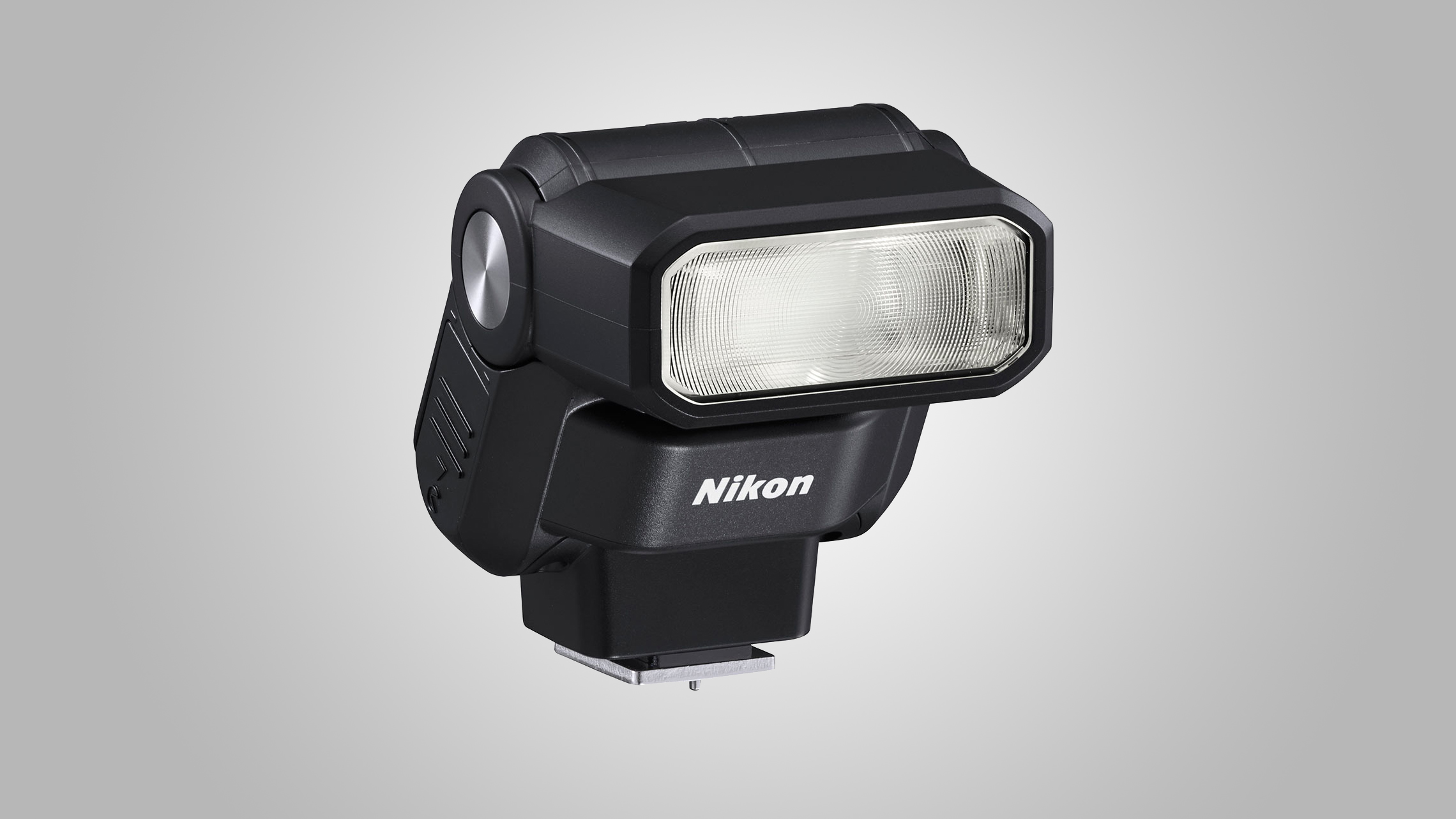
If you like travelling light, you’ll love the SB-300. It’s only about half the size of most flashguns and less than a third of the weight. Even the power source is downsized, as it runs from two AAA cells instead of the usual four AA batteries. It’s not all good news, however, as the baby Nikon is also a lightweight when it comes to maximum power output, with a lowly Gn 18 rating. And while there’s a generous 120 degrees of bounce angle, so the flash can literally bend over backwards, there’s no manual or motorized zoom facility, and no lateral swivel. The latter means that you can’t bounce the flash off a ceiling if you’re shooting in portrait (upright) orientation, when the flashgun is mounted in your camera’s hotshoe. There’s no wireless slave mode either, so off-camera operation relies on a cable connection or separate wireless triggering system. As is often the case with super-small flashguns, there’s no LCD screen nor onboard control buttons, so all adjustments need to be made from the host camera’s menu system.
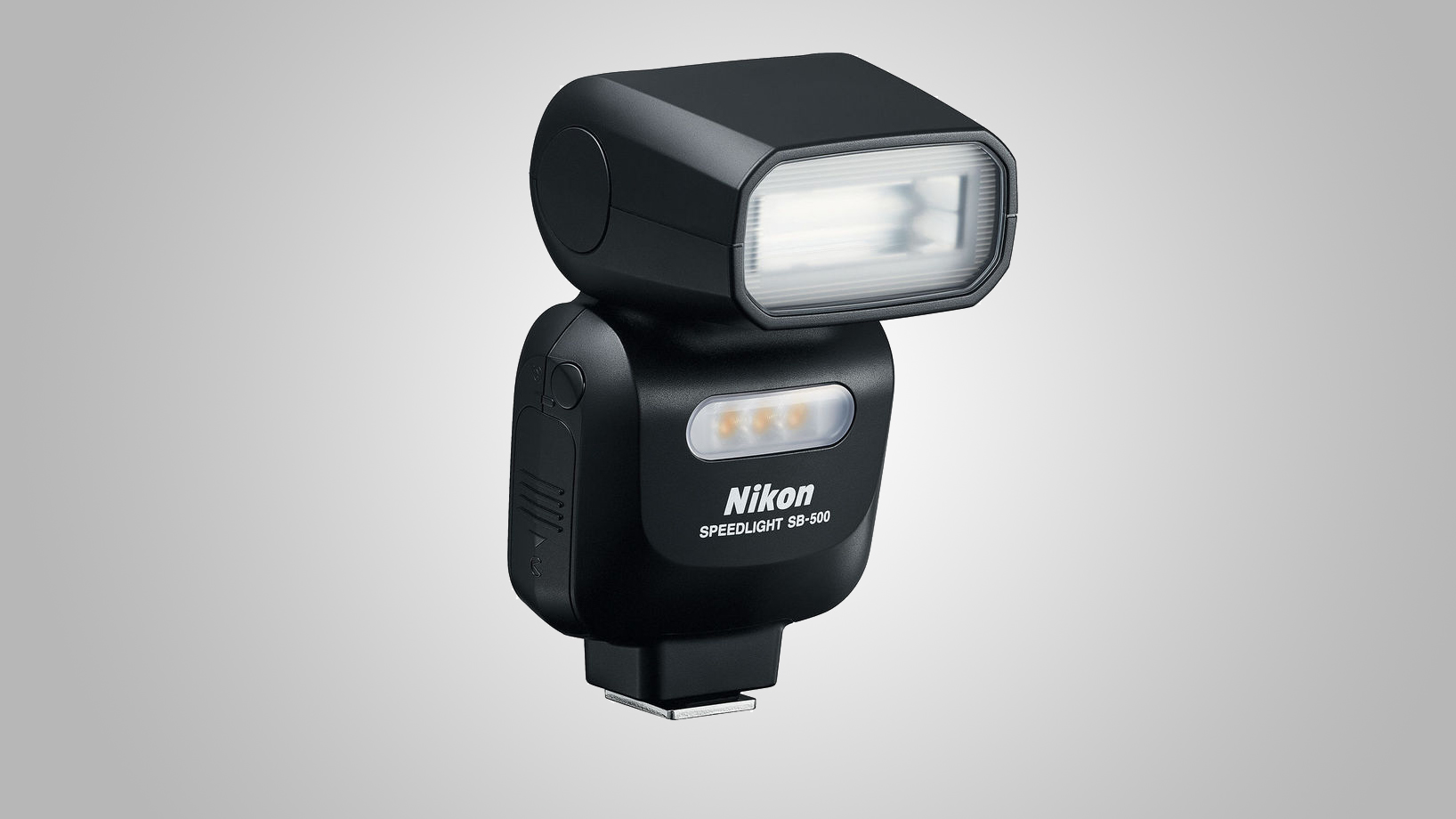
Although bigger than the SB-300, this Nikon flashgun is still smaller and lighter than most, and runs from two rather than four AA batteries. Drawbacks of the reduced size include the lack an LCD screen, which is substituted with basic status LEDs. There’s also no zoom head and no built-in wide-angle diffuser panel, nor a pull-out reflector card. On the plus side, the SB-500 does feature an additional LED ‘constant’ lamp, which is handy for shooting video and close-up stills. The wireless slave mode is a bonus (channel 3 only), but the commander mode only works with recent mid-range and up-market cameras from the D5500, D7200, D750 and D810 onwards. Maximum output is pretty respectable, representing a sizeable step up from the SB-300, although recycle speed is still sluggish, at nearly five seconds after a full-power flash when using NiMH batteries.
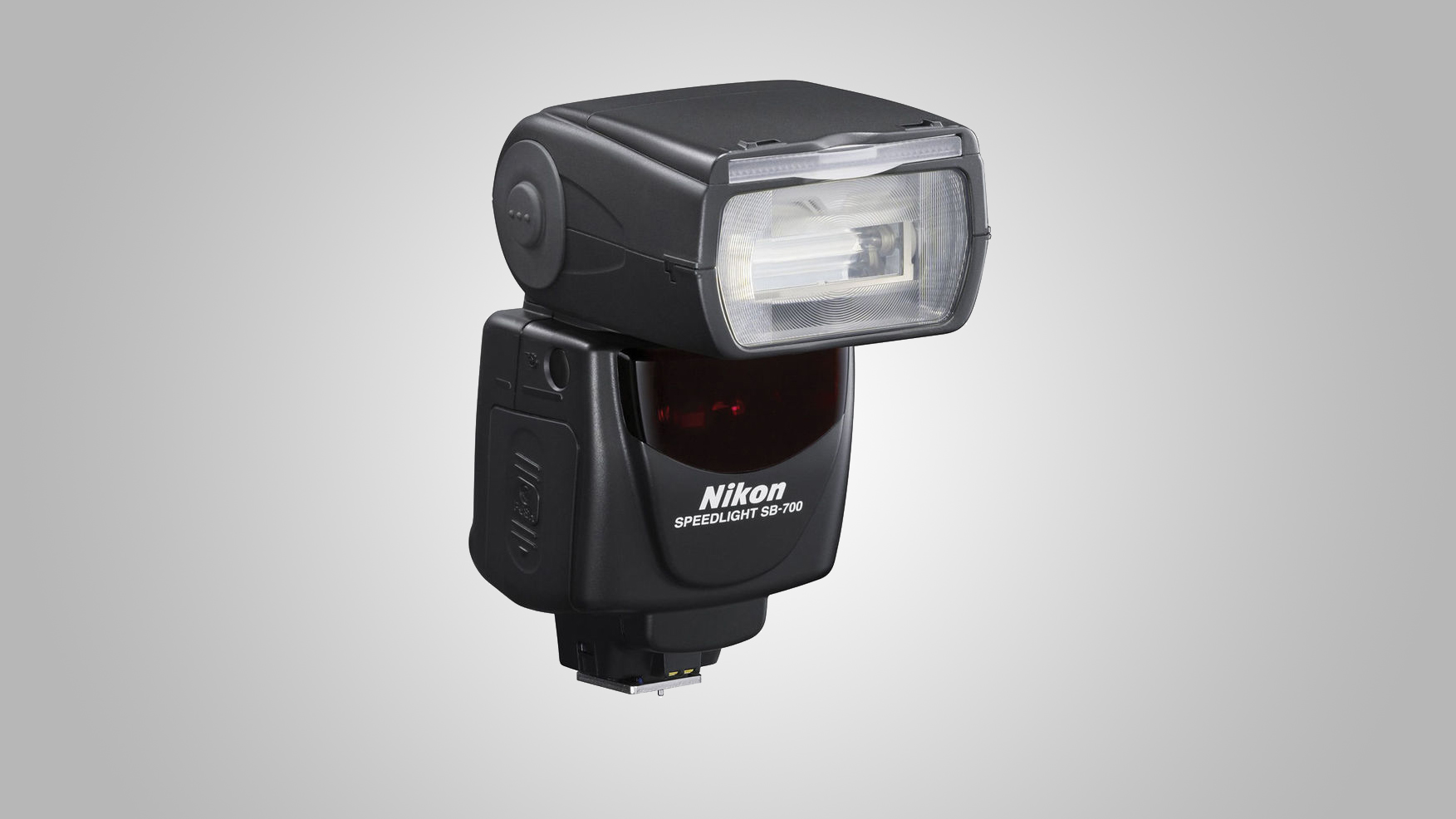
There are plenty of high-end features packed into the SB-700, including a switchable range of illumination patterns, a powerful 24-120mm motorized zoom range and a full set of wireless commander and slave modes. That said, wireless connectivity is limited to infrared and lacks the radio frequency option of the SB-5000. The control panel is wonderfully intuitive, except for the fact that you can only switch from TTL-BL (Balanced Light) mode to standard TTL flash by changing the metering mode on the host camera body. Maximum output isn’t quite as powerful as in some independent flashguns at similar prices, but should prove sufficient for most shooting scenarios, even in bounce/swivel mode. Recycling speed is nearly twice as fast as in the SB-500, at 2.7 seconds after a full-power flash when using NiMH batteries. However, recycling takes twice as long with alkaline cells.

Easily beating the SB-700 for maximum output, the SB-5000 has a powerful Gn 55 rating. It also boasts a bigger 24-200mm zoom range, adds a programmable repeat mode, and has a more comprehensive set of on-board controls. For rapid-fire operation, there’s a new integral cooling system that enables more than 100 continuous shots even at the full-power setting. Wireless connectivity gets a boost from the addition of RF as well as the more usual infrared linking. However, you can’t use the flashgun as a commander in RF mode, as it’s only fitted with a built-in receiver rather than a transceiver. Despite the generous maximum power output, recycling speeds are very fast at 2.3 seconds with NiMH batteries and just under three seconds with alkaline cells. If you want the best own-brand Nikon flashgun on the market, then look no further. However, there’s fierce competition from the likes of the Hahnel Modus 600RT, Metz Mecablitz 64 AF-1 and Phottix Mitros+ TTL Transceiver flashguns.

This Hahnel flashgun is available on its own or as part of two optional kits. The ‘Wireless Kit’ adds a hotshoe-mounting Viper RF trigger, and the ‘Wireless Pro Kit’ comprises two flashguns plus the RF trigger. The flashgun itself has a built-in RF transceiver enabling it to work in wireless RF mode as both a master and slave, over an impressive range of up to 100m. The addition of the Viper hotshoe-mounted trigger, with its on-board controls and LCD display, enables you to use one or more flashguns off-camera in RF wireless mode. A big difference compared with most flashguns is that the Hahnel is powered by a rechargeable Li-ion battery pack, instead of the usual four AA batteries. This enables a whopping 550 full-power flashes between recharging, and very rapid recycling speeds of just 0.7 and 1.5 seconds after a half-power or full-power flash respectively. Useful features include a 20-200mm motorized zoom head, a flip-down 14mm wide-angle diffuser and a pull-out catchlight/reflector card. There’s a full set of advanced flash modes, including high-speed sync, rear curtain and programmable repeat (multi-flash during a single exposure).

At first glance, this Metz flashgun looks a bit basic without any onboard controls. The reason for this is the inclusion of an intuitive touchscreen interface, which reduces button clutter around the back. The motorized zoom head has a 24-105mm range, with the usual reflector card and wide-angle diffuser built in, although swivel movement in the right-hand direction is limited to 120 degrees. For off-camera and multi-flashgun setups, the Metz includes both master and slave wireless modes. Typical of flashguns at this price point, there’s no programmable repeat flash mode. During our tests, maximum output was noticeably down on the specified Gn 52 rating, more similar to that of the Nikon SB-700. Recycling speeds are a little pedestrian too, taking just over four seconds after a full-power flash when using NiMH batteries. Overall, however, it’s an attractive flashgun at the price.

This is Metz’s most sophisticated dedicated flashgun, with a host of up-market features and a powerful Gn 64 output rating. Highlights include a 24-200mm zoom range, a -9 to 90-degree bounce facility, and the availability of both master and slave wireless operation. There’s also an unusual secondary sub-flash module, which is great for adding fill-in lighting when you’re using the main head in bounce or swivel mode. Like the Metz 52 AF-1, intuitive on-board control is based on a touchscreen but, this time, it’s a colour rather than mono screen. Pro-grade enhancements include a programmable repeat flash mode and a socket for an optional external power pack. When using NiMH batteries, recycling speed is pretty quick after a full-power flash, at 3.4 seconds, but recycling takes more than twice as long with alkaline cells.

On the face of it, this Nissin flashgun looks pretty basic, with on-board controls that boil down to a single Set button and control wheel. Rudimentary adjustments can be carried out, like TTL flash exposure compensation but, for almost everything else, you’ll need to resort to the host camera’s menu system. A big attraction of this kit is that it comes complete with Nissin’s sophisticated ‘Air 1 Commander’ RF transmitter that slots into your camera’s hotshoe. The flashgun itself works in both infrared and RF slave modes. Additional, optical slave modes include ‘digital’ and ‘film’ options, both with manual power settings. The digital option disregards pre-flash pulses when triggering, whereas the film mode triggers on the first pulse of light, more useful when slaving from studio flash heads. High-speed sync and rear curtain sync are available, but there’s no repeating flash mode for sequential bursts within a single exposure. There’s plenty of power on tap, with a generous Gn 60 rating and a lengthy zoom of up to 200mm. Recycling speeds are super-fast, at around two or three seconds when using NiMH or alkaline batteries respectively.

Despite having a relatively small and lightweight build, this Nissin packs a real punch with a Gn 60 power rating. There’s a particularly smart colour display around the back, with an intuitive pictorial interface. Further attractions include a 24-200mm motorized zoom head, full 180-degree swivel in both left and right directions, and a neat range of supplied accessories including a pouch, stand and diffusion dome. Nissin has also squeezed in a secondary, constant LED light for video capture or close-up stills. Infrared and RF wireless slave connectivity are built-in but, to make the most of the latter, you’d need to buy the ‘Air 1 Commander’ RF transmitter which is sold separately. The maximum power output through the zoom range matches that of Nissin’s bigger Di700A flashgun, although recycling speed after a full power flash is just over a second slower. Overall, it’s a very versatile and powerful flashgun, with a refreshingly compact build.

This high-end flashgun from Phottix boasts a Gn 58 rating at its longest zoom setting, although that only stretches to 105mm rather than the now often-featured 200mm. The head also has -7 to 90-degree vertical bounce and full 180-degree swivel in both lateral directions. Competing with own-brand, pro-spec flashguns, a programmable repeat flash mode is available, and the robust build features a weather-sealed mounting foot. There’s RF wireless connectivity with both master and slave modes. This is thanks to a built-in radio frequency transceiver, rather than a more simple receiver. The RF working range is 30m, and linking is compatible with Phottix Odin and Stratos radio triggers, as well as other Mitros+ flashguns. Recycling speed after a full-power flash with NiMH batteries is 3.5 seconds but recycling takes twice as long when using alkaline batteries.